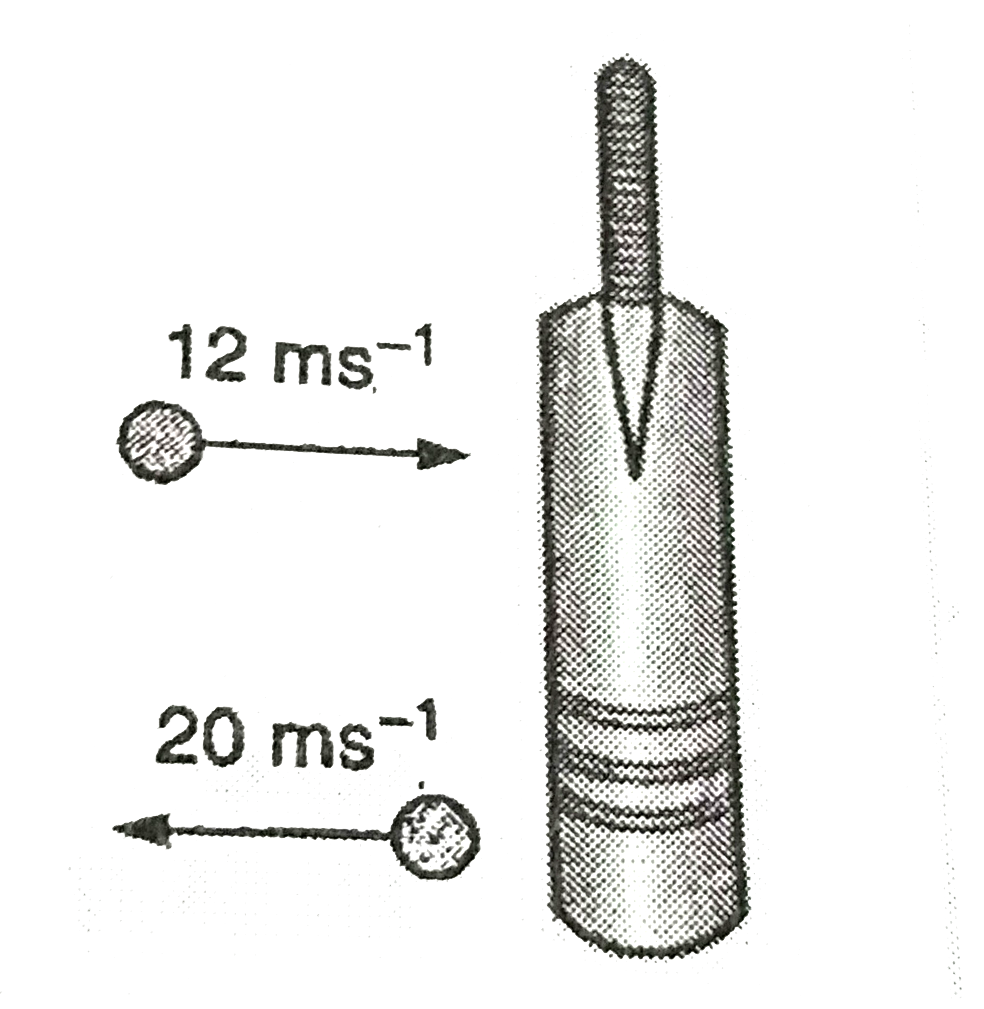A ball of mass 10 g is moving with a velocity of 50ms−1. On applying a constant force on ball for 2.0 s, it acquires a velocity of 70ms−1. Calculate the acceleration of ball
To solve the problem step by step, we will follow these calculations:
Step 1: Convert mass from grams to kilograms
The mass of the ball is given as 10 g. We need to convert this to kilograms because the standard unit of mass in physics is kilograms (kg).
Mass=10g=101000kg=0.01kg
Step 2: Identify initial and final velocities
From the problem, we know:
- Initial velocity (u) = 50 m/s
- Final velocity (v) = 70 m/s
Step 3: Identify the time duration
The time duration (t) for which the force is applied is given as 2 seconds.
Step 4: Use the formula for acceleration
Acceleration (a) can be calculated using the formula:
a=v−ut
Substituting the known values into the formula:
a=70m/s−50m/s2s
Step 5: Calculate the change in velocity
Calculate v−u:
v−u=70−50=20m/s
Step 6: Calculate acceleration
Now substitute this value back into the acceleration formula:
a=20m/s2s=10m/s2
Final Answer
The acceleration of the ball is 10m/s2.
---
The mass of the ball is given as 10 g. We need to convert this to kilograms because the standard unit of mass in physics is kilograms (kg).
From the problem, we know:
- Initial velocity (u) = 50 m/s
- Final velocity (v) = 70 m/s
The time duration (t) for which the force is applied is given as 2 seconds.
Acceleration (a) can be calculated using the formula:
Calculate v−u:
Now substitute this value back into the acceleration formula:
The acceleration of the ball is 10m/s2.
Topper's Solved these Questions
- BOOK - ICSECHAPTER - LAWS OF MOTIONEXERCISE - TOPIC 3 (2 Marks Questions )9videos
LAWS OF MOTION
- BOOK - ICSECHAPTER - LAWS OF MOTIONEXERCISE - TOPIC 3 (3 Marks Questions )7videos
LAWS OF MOTION
- BOOK - ICSECHAPTER - LAWS OF MOTIONEXERCISE - TOPIC 2 (3 Marks Questions )11videos
LAWS OF MOTION
- BOOK - ICSECHAPTER - ICSE ANNUAL EXAMINATION -2020EXERCISE - SECTION-II45videos
ICSE ANNUAL EXAMINATION -2020
- BOOK - ICSECHAPTER - LIGHTEXERCISE - TOPIC 2 Spherical Mirrors (4 Marks Questions )9videos
LIGHT
Similar Questions
A ball of mass 10 g is moving with a velocity of 50ms−1. On applying a constant force on ball for 2.0 s, it acquires a velocity of 70ms−1. Calculate the final momentum of ball
View SolutionA ball of mass 10 g is moving with a velocity of 50ms−1. On applying a constant force on ball for 2.0 s, it acquires a velocity of 70ms−1. Calculate the initial momentum of ball
View SolutionA ball of mass 10 g is moving with a velocity of 50ms−1. On applying a constant force on ball for 2.0 s, it acquires a velocity of 70ms−1. Calculate the rate of change of momentum
View SolutionA ball of mass 10 g is moving with a velocity of 50ms−1. On applying a constant force on ball for 2.0 s, it acquires a velocity of 70ms−1. Calculate the magnitude of force applied.
View SolutionA ball of mass 0.2 kg moves with a velocity of 20m/sec and it stops in 0.1 sec , then the force on the ball is
View SolutionA ball of mass 0.2 kg moves with a velocity of 20m/sec and it stops in 0.1 sec , then the force on the ball is
View SolutionA ball of mass 0.5 kg is moving with a velocity of 2ms−1. It if subjected to a force of x Newton for 2s. Because of this force, the ball moves with a velocity of 3ms−1 . The value of x is :
View SolutionA ball of mass 1 kg moving with a velocity of 0.4 ms−1 collides with another stationary ball. After the collision, the first ball moves with a velocity of 0.3ms1 in a direction making an angle of 90∘ with its initial direction. The momentum of the second ball after the collision will be (in kg ms−1)
View SolutionA cricket ball of 0.5 kg is moving with a velocity of 100ms−1. The wavelength associated with its motion is :
View SolutionA cricket ball of mass 150 g is moving with a speed of 12ms−1 and is hit by a bat so that the ball is turned back with velocity of 20ms−1 if duration of contact between bat and ball is 0.01 s then:
 View Solution
View Solution

